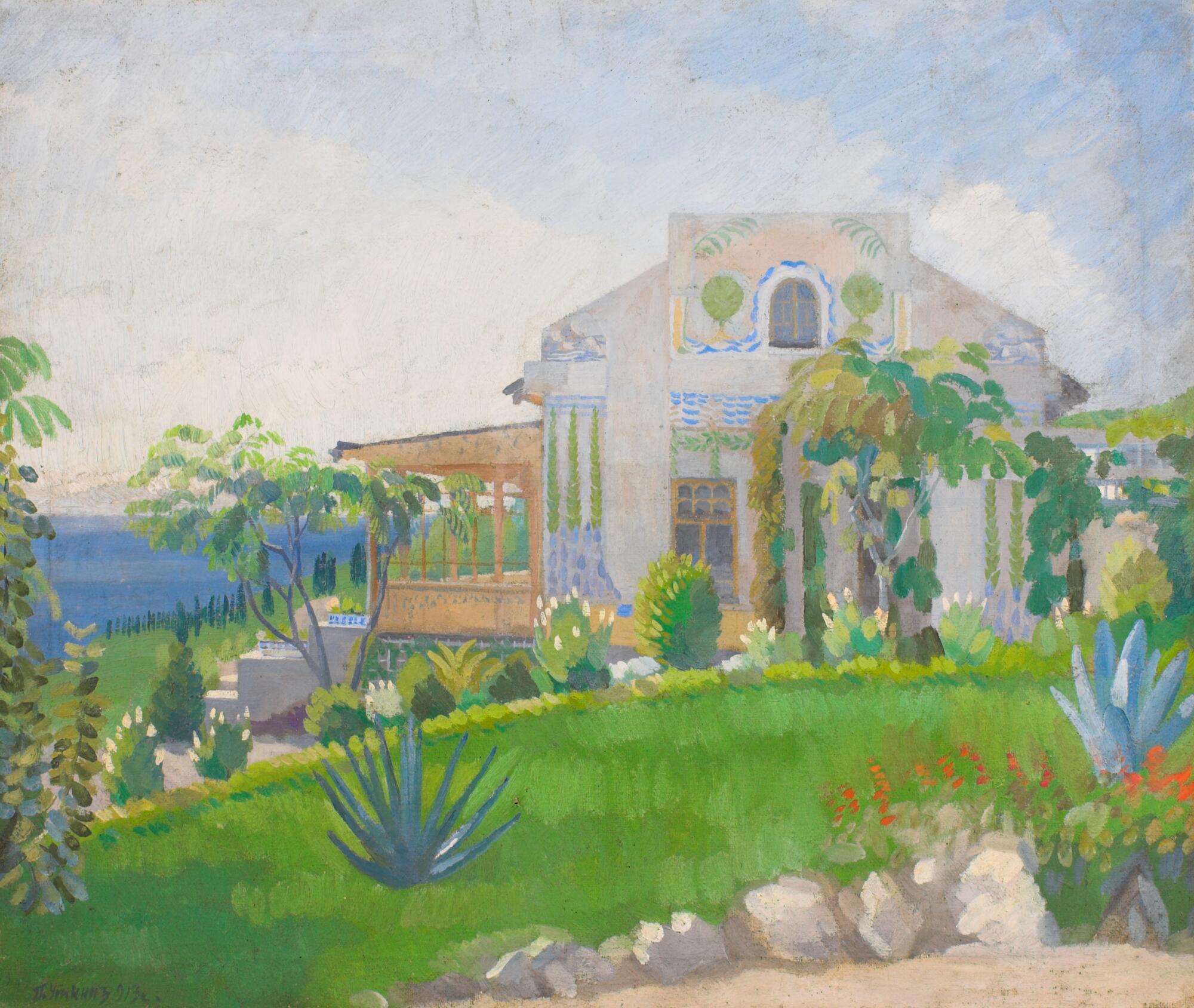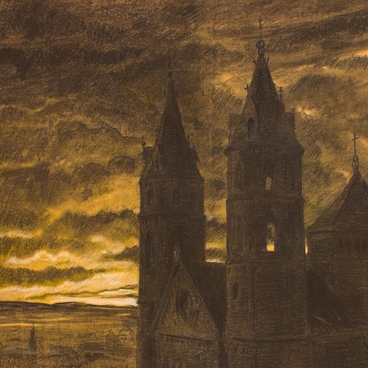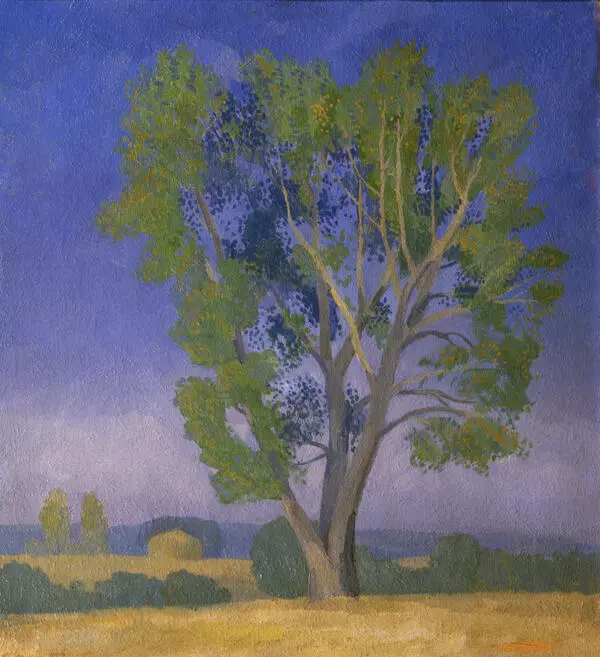Professor of the Academy of Arts, Pyotr Utkin, known as a painter and drawing artist, was a representative of the symbolism. Symbolism in painting is characterized by mysticism, mysterious themes and plots, allegories, unclear and anxious mood, esoteric symbols, foggy and gloomy color scheme. Utkin’s graphic artworks appeared on the pages of the magazine “Golden fleece”, he was a book illustrator, among his specialties were ceramics, and mural paintings.
In 1907, Pyotr Utkin graduated from the Moscow school of painting, sculpture and architecture and became one of the founders of the “Blue rose”, which was the only valid association of symbolists in Russia. The followers of the “Blue rose” attempted to find a way to express non-material concepts in their artworks — emotions, moods, and experiences. They created decorative and stylized, and sometimes even primitive artworks associated with the spirit of children’s artistic works.
However, in general, Pyotr Utkin adhered to the traditions of the landscape genre. He created his ‘View of the New Kuchuk-Koi estate’ in 1908 — 1914, when he was working in the Crimea with the sculptor Alexander Matveev and artist Pavel Kuznetsov, who were also from Saratov. Together they worked on the design of the ensemble of the New Kuchuk-Koi estate, which was owned by Yakov Zhukovsky — an official, collector and philanthropist from Saint Petersburg.
This ensemble was a combination of three arts — architecture, painting and sculpture. The estate was decorated with wall paintings, majolica and mosaics. Pyotr Utkin worked on the interior paintings and facades of the house, he created dozens of watercolor paintings and pictures depicting different corners of the estate. In these artworks, Utkin abandoned the aesthetic methods of symbolism, and worked in a more realistic manner. One of the artworks he created during this period was his painting ‘View of the New Kuchuk-Koi estate’, dated 1913. The landscape painting was made with tempera, the mystical moderate blue color is prevailing there. The decorative paintings at the estate looks similar to the images of flowers and trees, to emphasize the unity of nature and architecture. The use of large brushstrokes was typical for painting techniques of that period, but the author finely conveyed the shades and color combinations to express the atmosphere of a hot summer on the seaside.
In 1907, Pyotr Utkin graduated from the Moscow school of painting, sculpture and architecture and became one of the founders of the “Blue rose”, which was the only valid association of symbolists in Russia. The followers of the “Blue rose” attempted to find a way to express non-material concepts in their artworks — emotions, moods, and experiences. They created decorative and stylized, and sometimes even primitive artworks associated with the spirit of children’s artistic works.
However, in general, Pyotr Utkin adhered to the traditions of the landscape genre. He created his ‘View of the New Kuchuk-Koi estate’ in 1908 — 1914, when he was working in the Crimea with the sculptor Alexander Matveev and artist Pavel Kuznetsov, who were also from Saratov. Together they worked on the design of the ensemble of the New Kuchuk-Koi estate, which was owned by Yakov Zhukovsky — an official, collector and philanthropist from Saint Petersburg.
This ensemble was a combination of three arts — architecture, painting and sculpture. The estate was decorated with wall paintings, majolica and mosaics. Pyotr Utkin worked on the interior paintings and facades of the house, he created dozens of watercolor paintings and pictures depicting different corners of the estate. In these artworks, Utkin abandoned the aesthetic methods of symbolism, and worked in a more realistic manner. One of the artworks he created during this period was his painting ‘View of the New Kuchuk-Koi estate’, dated 1913. The landscape painting was made with tempera, the mystical moderate blue color is prevailing there. The decorative paintings at the estate looks similar to the images of flowers and trees, to emphasize the unity of nature and architecture. The use of large brushstrokes was typical for painting techniques of that period, but the author finely conveyed the shades and color combinations to express the atmosphere of a hot summer on the seaside.





